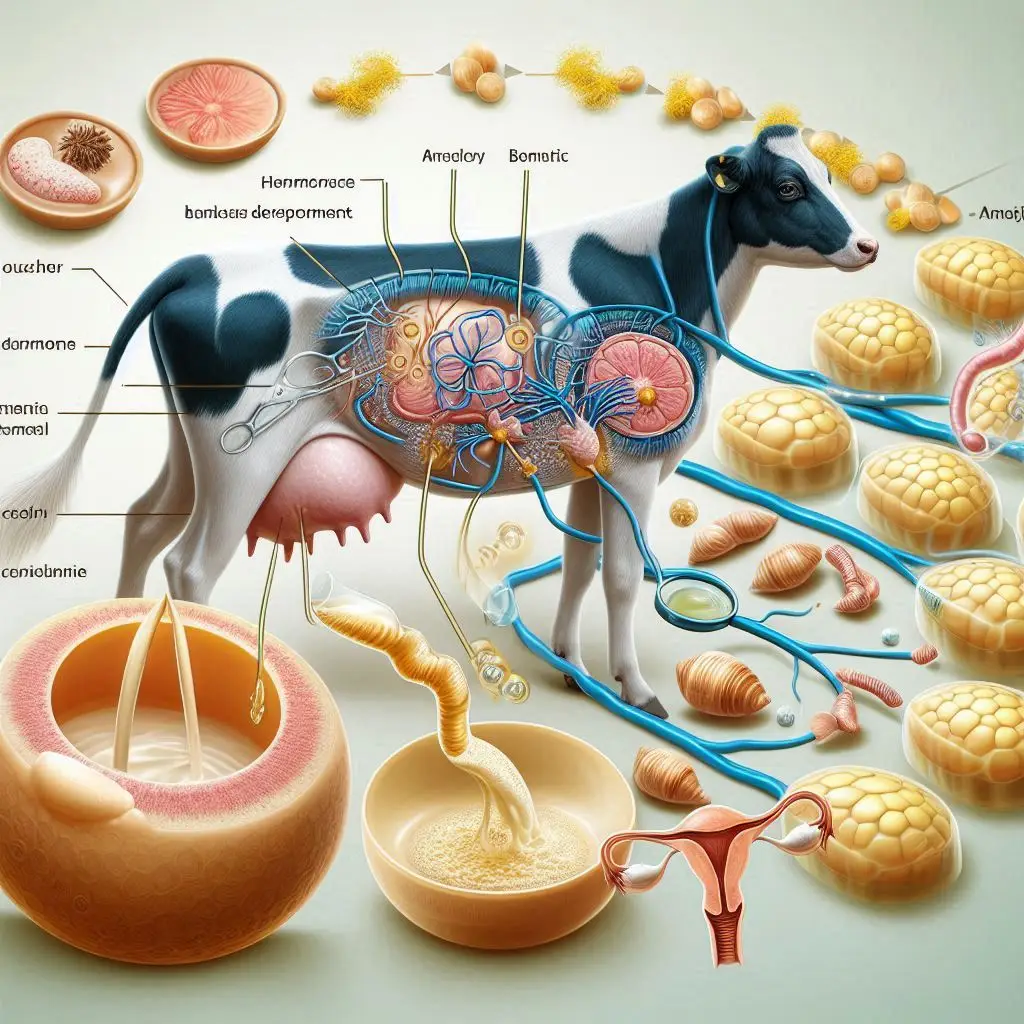Protein Requirements for Lactating Livestock

Introduction
Understanding the protein requirements for lactating livestock is crucial for farmers and animal nutritionists. Proper nutrition directly influences milk production, animal health, and overall farm profitability. This article will explore the various factors that affect protein needs, how to calculate these requirements, and the implications of inadequate protein intake.
Importance of Protein in Lactation
Protein plays a vital role in the body. It is essential for:
- Milk Production: Milk is composed mainly of water, fat, lactose, and proteins. The primary proteins in milk are casein and whey. These proteins are crucial for calf growth and development.
- Body Maintenance: Lactating animals need protein to maintain their body condition. This includes repairing tissues and supporting metabolic processes.
- Growth and Reproduction: Young animals require protein for growth. In pregnant or lactating females, adequate protein supports fetal development.
Factors Influencing Protein Requirements
Several factors determine how much protein a lactating animal needs:
- Stage of Lactation
- Early lactation requires higher protein levels due to increased milk production.
- Mid-lactation sees a slight decrease in protein needs.
- Late lactation requires even less protein as milk production declines.
- Milk Production Levels
- Higher milk yields necessitate more protein. For instance, cows producing over 12 liters per day require some Undegradable Dietary Protein (UDP) in their diets.
- Animal Size and Weight
- Larger animals generally have higher protein needs. The formula to estimate daily Protein Digestible in Intestine (PDI) is:PDI g =100+0.5×LW kg PDI g =100+0.5×LW kg
- Diet Composition
- The type of feed affects protein availability. High-quality forages can meet some protein needs but may not suffice for high-producing animals.
- Environmental Stressors
- Heat stress can increase maintenance energy requirements by up to 10%, indirectly affecting protein needs.
Calculating Protein Requirements
To establish accurate protein requirements, consider the following:
Crude Protein Needs by Lactation Stage
| Stage of Lactation | Crude Protein (%) |
|---|---|
| Early Lactation | 16-18% |
| Mid-Lactation | 14-16% |
| Late Lactation | 12-14% |
| Dry Period | 10-12% |
Daily Protein Requirements
For cows producing various amounts of milk per day, the necessary PDI can be summarized as follows:
| Production Level (L/day) | Necessary PDI (g/day) | Lysine (% PDI) | Methionine (% PDI) |
|---|---|---|---|
| Low (≤ 12 L) | 1355 | 7.3 | 2.5 |
| Moderate (12-20 L) | 1595 | 7.3 | 2.5 |
| High (> 20 L) | 2075 | 7.3 | 2.5 |
Amino Acid Considerations
Specific amino acids like lysine and methionine are often limiting in diets for high-producing cows. Approximately half of a cow’s protein requirement during lactation should come from these amino acids.
Nutritional Strategies to Meet Protein Needs
To effectively meet the protein requirements of lactating livestock:
- Balanced Diet Formulation
- Use a mix of Rumen Degradable Protein (RDP) and UDP to ensure sufficient amino acid availability.
- Incorporate high-quality feedstuffs that provide essential amino acids.
- Monitor Milk Production
- Regularly assess milk yield to adjust dietary protein accordingly.
- Supplementation
- Consider adding supplements if natural feed does not meet the required levels of lysine and methionine.
- Regular Health Checks
- Monitor the health of lactating animals to identify any signs of nutritional deficiencies early on.
Impacts of Inadequate Protein Intake
Insufficient protein intake can lead to several issues:
- Reduced Milk Production: Cows may produce less milk if they do not receive adequate protein.
- Poor Body Condition: Animals may lose weight or fail to regain condition after calving.
- Reproductive Issues: Low protein levels can affect fertility rates and reproductive performance.
Conclusion
In conclusion, understanding the protein requirements for lactating livestock is essential for optimizing milk production and maintaining animal health. By considering factors such as stage of lactation, production levels, and dietary composition, farmers can formulate effective feeding strategies that meet the nutritional needs of their livestock. By implementing these strategies, farmers can ensure that their livestock remain healthy and productive throughout their lactation period.
For more pearls of Vets Wisdom:
https://wiseias.com/partitioning-of-food-energy-within-animals/






Responses